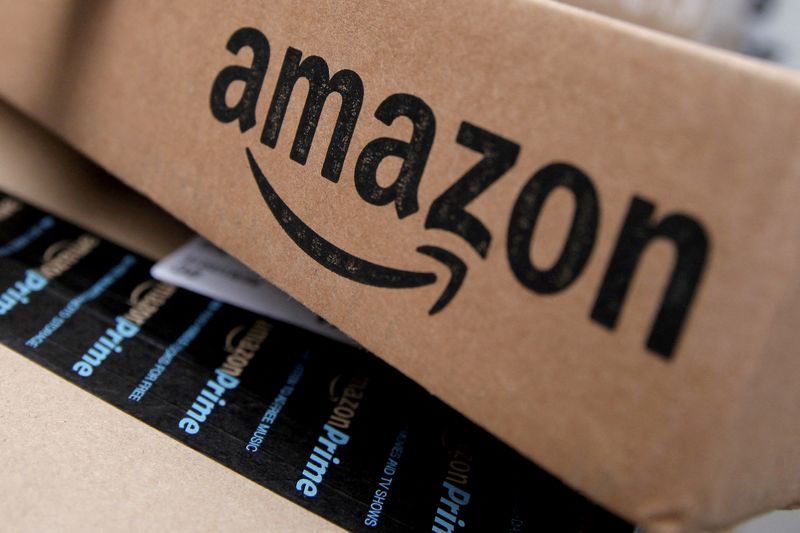By Akash Sriram, Jeffrey Dastin and Arriana McLymore
(Reuters) -Amazon.com Inc signaled on Thursday its long lofty cloud growth would slow further as its business customers braced for turbulence and clamped down on spending, overshadowing the company's quarterly sales and profit that topped expectations.
In extended trading, Amazon (NASDAQ:AMZN)'s stock initially added about $125 billion in value on its upbeat view of consumer sentiment and the company's holding its own among cloud competitors, only to see the entire gain vanish in a matter of minutes.
The drop in the share price followed remarks by Chief Financial Officer Brian Olsavsky, who told analysts that cloud customers kept trying to slim down their bills as of the second quarter and that Amazon was helping them do so to build long-term relationships.
That meant revenue growth rates were about 5 percentage points lower in April than in the first quarter, he said, referring to a period that saw a sequential drop.
Shares are now down 2%.
Amazon's surprise rise and fall are signs of a precarious moment for the company. Addressing what he has called an uncertain economy, CEO Andy Jassy has aimed to slash spending across Amazon's vast array of divisions. At the same time, Amazon is facing a nascent threat from its cloud rivals Microsoft (NASDAQ:MSFT) and Google (NASDAQ:GOOGL), which are rolling out high-profile artificial intelligence tools.
The cost cuts have run deep. Amazon has aimed to axe 27,000 corporate roles since November; and its headcount has fallen 10% to 1.47 million full and part-time workers, including in warehouses, as of the just-ended quarter.
The company likewise is ending entire services, among them its Halo health trackers. It has reorganized its national fulfillment operation so it can locate goods closer to shoppers and deliver them faster and cheaper.
These moves contributed to Amazon's $3.17 billion profit in the period ended March 31, compared with a loss of $3.84 billion, a year earlier.
But this did little to draw investors. David Klink, an analyst at Huntington National Bank, said the company's cloud slowdown was "tremendous."
"You're not seeing (that) at either Microsoft or Google," said Klink, whose bank owned $129 million in Amazon stock as of Thursday.
CONSUMER CONFIDENCE?
Amazon has sought new revenue all the while. Olsavsky told reporters that the economy has brightened internationally.
"It's good to see inflation going down there," he said. "It's good to see consumer confidence increasing."
In North America, Amazon's largest market, demand held up, he said. But "you see signs that customers are looking for value" and "probably putting off some discretionary purchases."
Ultimately, the online retailer reported better-than-expected sales of $127.36 billion in the first three months of the year, and it forecast revenue between $127 billion and $133 billion in the second quarter.
Its economy-wary customers aside, Amazon aimed to project confidence for its cloud longer-term.
Jassy said the growing adoption of generative AI, which can create text, imagery and other content from past data, represented a huge opportunity for Amazon's cloud. One reason is its proprietary chips that he said can power much of what businesses wish to do with AI; another is Amazon's own new AI tools.
Likewise, Olsavsky told reporters, Amazon had seen no shift in the competitive balance among cloud providers. His comments followed a financial report by Microsoft this week that exceeded analysts' expectations as the Amazon rival drew business through AI. AWS sales growth slowed to 15.8% in the first quarter.

Dennis Dick, an equity trader and market structure analyst at Triple D Trading, said shareholders were likely to sell.
"AWS growth slowing is a signal for investors to take profits," he said.